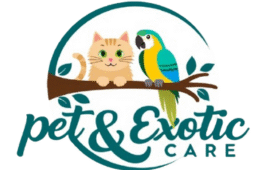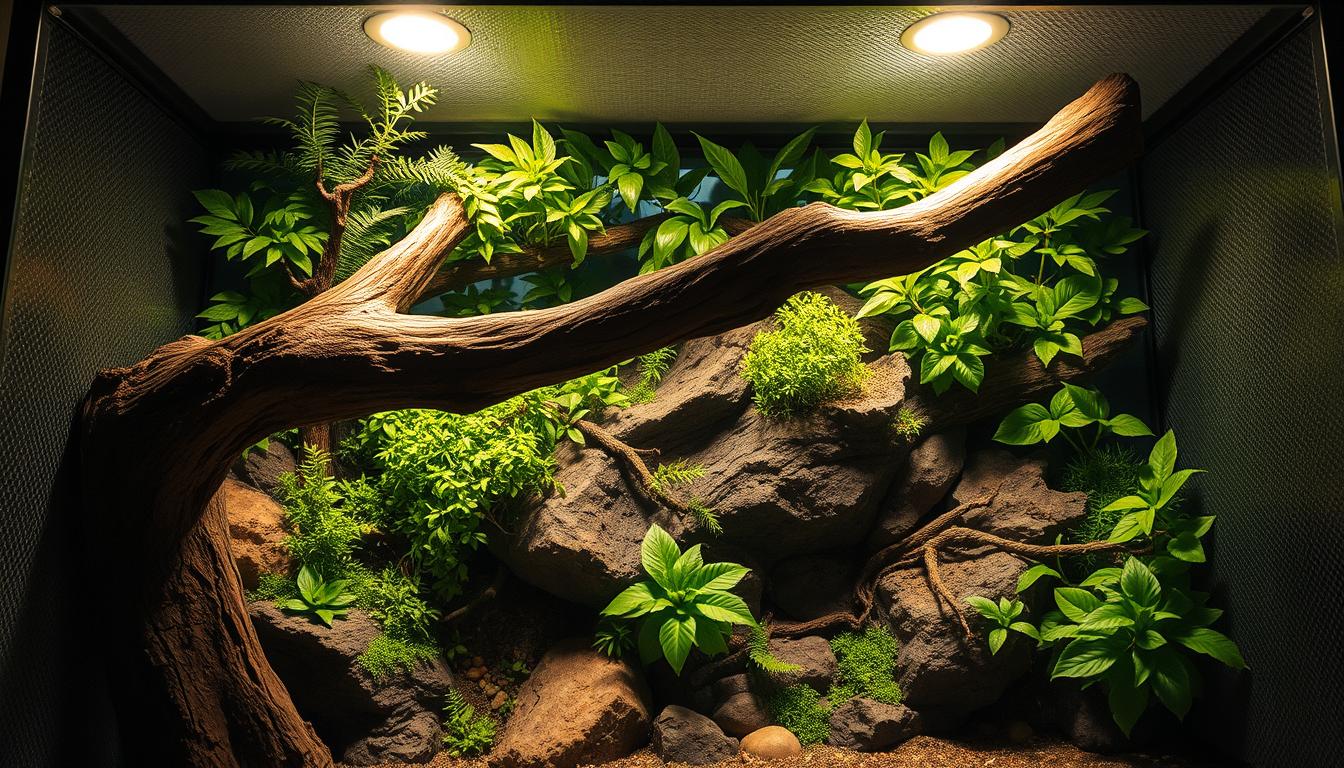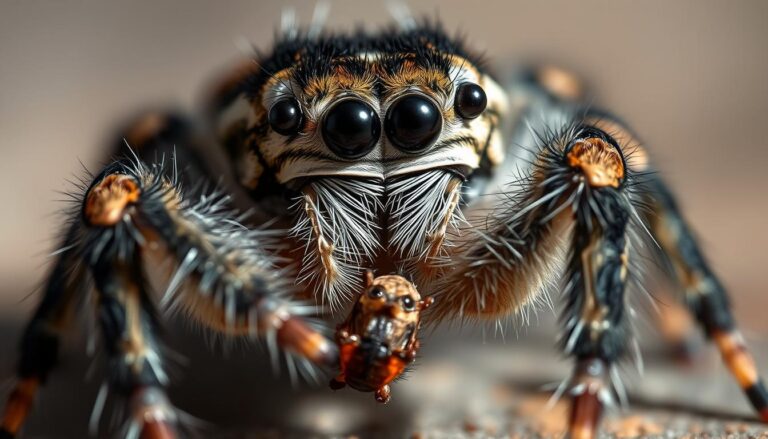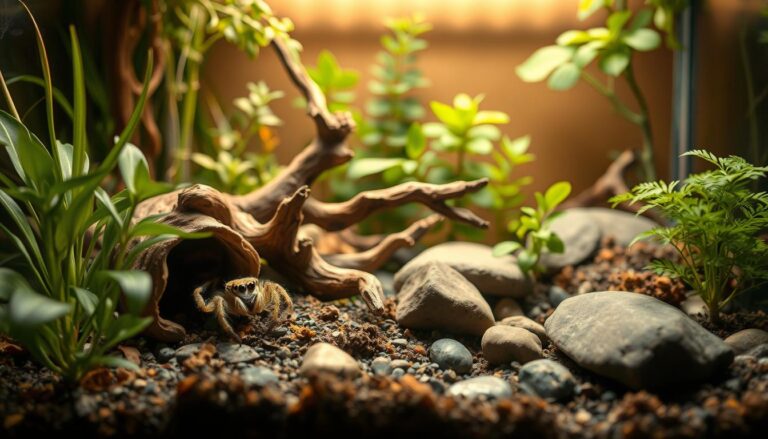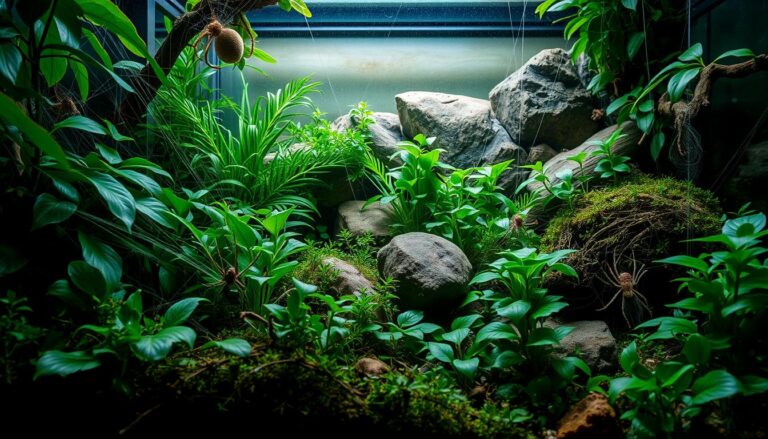Jumping Spider Enclosure Ideas: DIY Habitat and Feeding Guide
Jumping spiders are fascinating creatures known for their intelligence and unique behaviors. These small arachnids make excellent pets for enthusiasts who appreciate their curious nature. However, creating the right environment is crucial for their well-being. Replicating their natural arboreal habitat is essential. A well-designed enclosure ensures they feel safe and thrive. This includes proper ventilation,…
Jumping spiders are fascinating creatures known for their intelligence and unique behaviors. These small arachnids make excellent pets for enthusiasts who appreciate their curious nature. However, creating the right environment is crucial for their well-being.
Replicating their natural arboreal habitat is essential. A well-designed enclosure ensures they feel safe and thrive. This includes proper ventilation, lighting, and space for climbing. Balancing aesthetics with functionality can make the setup both practical and visually appealing.
When setting up a habitat, consider bioactive options that mimic their natural ecosystem. Inert setups are also viable but require more maintenance. Species-specific needs, especially for US-native varieties, must be addressed to ensure long-term health.
Feeding protocols and USDA-compliant care standards are equally important. Avoid common mistakes like improper ventilation or inadequate lighting. Following manufacturer guidelines, such as those from Spider Shop, can help create an ideal environment for your pet.
Key Takeaways
- Jumping spiders thrive in environments that replicate their natural arboreal habitat.
- Proper ventilation and lighting are critical for a healthy enclosure.
- Bioactive setups mimic natural ecosystems, while inert options require more maintenance.
- Species-specific needs must be considered for optimal care.
- USDA-compliant standards ensure safe and ethical pet ownership.
Creating the Perfect Jumping Spider Enclosure
Designing a habitat for these small arachnids requires careful planning and attention to detail. A well-designed space ensures they feel secure and can exhibit natural behaviors. This involves selecting the right size, type, and components for their needs.
Choosing the Right Enclosure Size and Type
The size of the habitat should match the species’ natural tendencies. Smaller setups work for solitary creatures, while larger spaces allow for climbing and exploration. Glass or acrylic containers are popular choices due to their durability and visibility.
Essential Components for a Naturalistic Habitat
Replicating their natural environment is crucial. Include climbing structures like branches or vines and hiding spots such as cork bark or small plants. These elements provide mental stimulation and mimic their arboreal lifestyle.
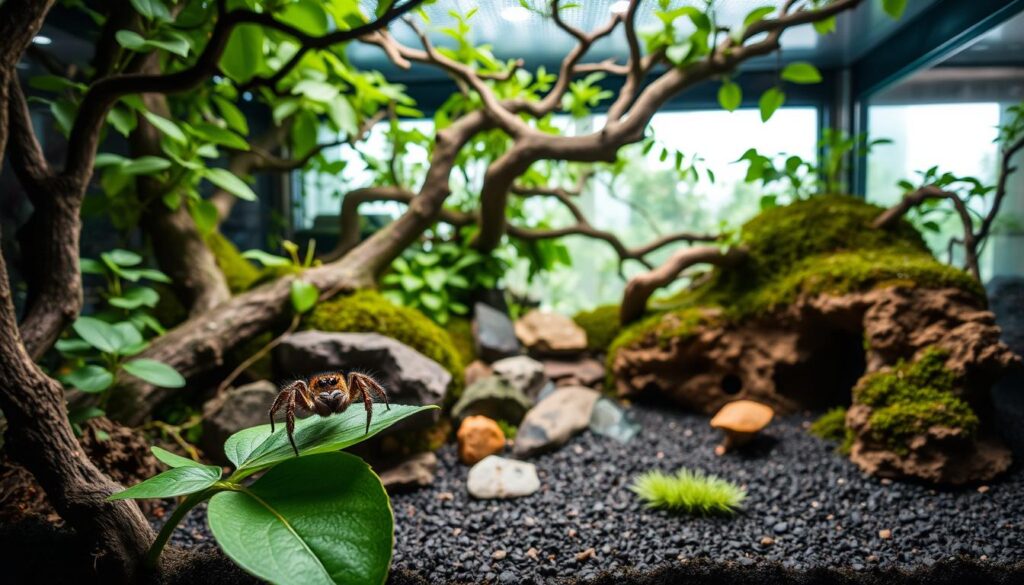
Lighting and Ventilation Requirements
Proper lighting and airflow are vital for their well-being. A 12-hour daylight cycle using 6,000°K LEDs supports their natural photoperiodism. Cross-ventilation, achieved through top and bottom vents, ensures fresh air circulation.
- Calculate safe LED distances to prevent overheating.
- Program automated lighting schedules for consistency.
- Use hygrometers and thermometers to monitor humidity and temperature.
Addressing winter humidity challenges and comparing full-spectrum vs. standard LEDs can further enhance their habitat. Understanding diapause triggers in temperate species is also essential for long-term care.
Setting Up a Jumping Spider Habitat
Creating a comfortable and safe environment for these arachnids is essential for their well-being. A well-designed space ensures they thrive and exhibit natural behaviors. This involves careful attention to their physical and environmental needs.
Climbing Structures and Hiding Spots
These creatures love to climb and explore. Adding branches, vines, or cork bark provides them with opportunities to move and hide. These elements mimic their natural surroundings and keep them mentally stimulated.

Substrate Options: Bioactive vs. Inert
Choosing the right substrate is crucial. Bioactive setups include live plants and microorganisms, creating a self-sustaining ecosystem. Inert substrates, like coconut fiber, are easier to maintain but require regular cleaning.
Temperature and Humidity Control
Maintaining the right conditions is vital. The ideal temperature range is 20-28°C (69-83°F). Humidity should stay between 50-80%. Use tools like thermostats and hygrometers to monitor these levels.
| Component | Recommendation |
|---|---|
| Heating | Space heaters or heat mats with thermostat control |
| Humidity | Foggers or misting systems for consistent levels |
| Monitoring | Digital hygrometers and thermometers |
Addressing species-specific needs ensures their home is tailored to their requirements. Emergency cooling protocols and winter hydration stations can further enhance their comfort.
Feeding and Hydration for Jumping Spiders
Proper nutrition and hydration are key to keeping these arachnids healthy and active. A well-balanced diet and consistent access to water ensure they thrive in their enclosure. Understanding their dietary needs and hydration methods is essential for their care.
Best Food Sources for Optimal Health
These creatures thrive on a diet of live insects. Common options include fruit flies, small crickets, and mealworms. Providing a variety of prey ensures they receive essential nutrients.
For younger spiders, smaller prey like pinhead crickets or fruit flies is ideal. Adults can handle larger insects, but portion control is crucial to avoid overfeeding. Always ensure the prey is appropriately sized for their safety.
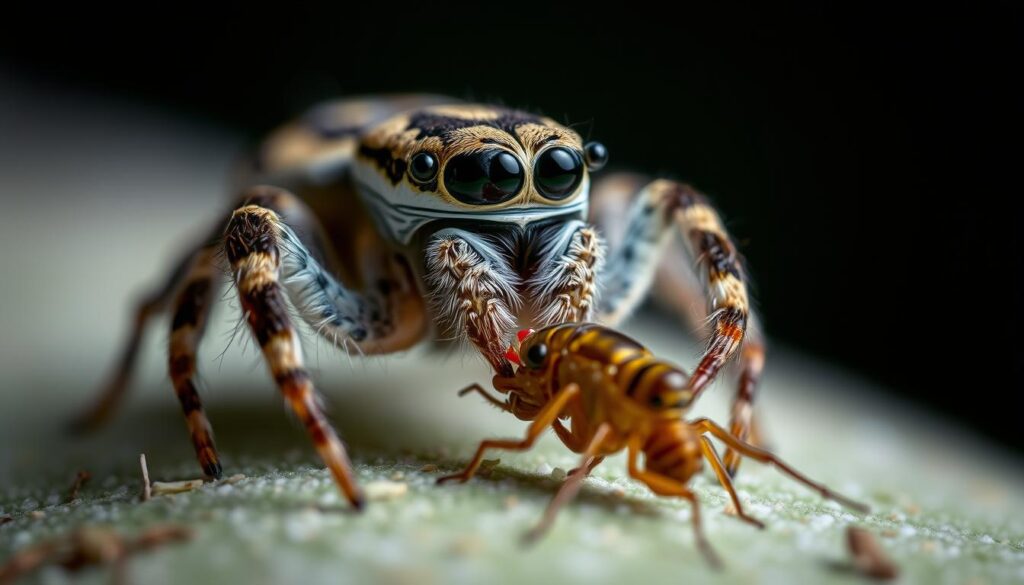
Hydration Methods: Misting and Water Dishes
Hydration is equally important for their well-being. Fine mist spraying techniques mimic natural dew, providing moisture for their book lungs. Automated misting systems can ensure consistency.
Water dishes are another option but must be shallow to prevent drowning. Positioning them strategically within the enclosure ensures easy access. For slings, Q-tip hydration is a safe alternative.
“Maintaining proper humidity levels is critical to prevent dehydration and respiratory issues.”
| Hydration Method | Benefits |
|---|---|
| Misting | Mimics natural dew, supports book lung moisture |
| Water Dishes | Provides constant access, easy to monitor |
| Q-tip Hydration | Safe for slings, prevents drowning risks |
Weekly hydration checks are recommended to ensure their needs are met. Comparing sphagnum moss vs. cotton for moisture retention can also enhance their habitat. Addressing dehydration symptoms early prevents long-term health issues.
Conclusion
Caring for these unique arachnids requires attention to detail and a thoughtful approach. A well-designed enclosure ensures they feel secure and thrive. Key principles include proper sizing, ventilation, and lighting tailored to their species-specific needs.
Observing their behavior is a great indicator of success. Active climbing and hunting show they’re comfortable. Regular maintenance, like cleaning and monitoring humidity, keeps their environment healthy.
Gradual upgrades, such as adding climbing structures or bioactive elements, enhance their habitat. Responsible practices, like sourcing USDA-compliant resources, ensure ethical care. For new owners, a final checklist can simplify the setup process.
By following these guidelines, you can create a safe and stimulating space for your spider. This ensures their well-being and allows you to enjoy their fascinating behaviors.
